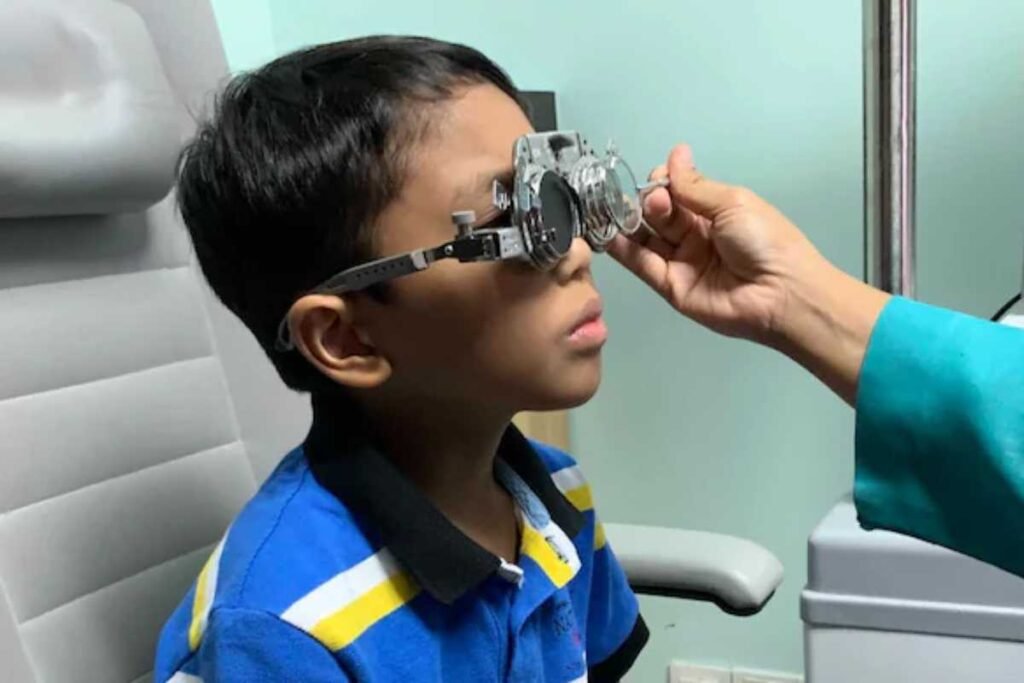Source – indiatoday.in
A recent global study has revealed alarming trends in childhood vision health, showing that approximately one in three children and teenagers worldwide is near-sighted. This growing issue, known as myopia, is expected to affect over 740 million young people by 2050, according to an analysis published in the British Journal of Ophthalmology. The study draws attention to the urgent need for public health interventions to address this crisis.
Myopia Epidemic: A Growing Public Health Concern
Myopia, or near-sightedness, is a condition where distant objects appear blurry while close objects remain clear. It typically starts in early childhood and tends to worsen with age. This issue has emerged as a significant public health concern, particularly in Southeast Asia, where the rates are among the highest globally.
The recent comprehensive analysis, which examines data from 1990 to 2023, highlights a rapid rise in myopia prevalence, with the numbers expected to continue climbing. The research is based on 276 studies involving over 5 million children and adolescents across 50 countries, providing a robust picture of the global scope of the problem.
Significant Increase in Myopia Epidemic
The analysis shows a more than threefold increase in the overall prevalence of myopia among children and teenagers from 1990 to 2023. In the 1990s, around 24% of young people were affected, which rose slightly to 25% by 2000. However, from 2011 to 2019, there was a sharp jump to 30%, and by 2023, the number climbed to 36%—indicating that one in every three children and teenagers is now near-sighted.
The problem is more pronounced in teenagers than in younger children. Between 2020 and 2023, the prevalence of myopia in teens peaked at 54%, compared to 36% in children. Although teens show a higher overall rate, the most rapid increase has been observed among younger children.
Regional and Demographic Disparities
The study identifies several key factors influencing the prevalence of myopia, including geographic region, urbanization, sex, and educational level. Children in East Asia had a significantly higher rate of myopia (35%), followed by those living in urban areas (29%) and those with higher levels of education (46%). Additionally, girls were found to be more likely to develop myopia than boys, with a prevalence rate of 34% compared to 31% for boys.
Regionally, the highest prevalence was observed in Japan, while the lowest was in Paraguay. The researchers suggest that rapid economic development in East and South Asia has contributed to the steep rise in myopia epidemic, particularly due to factors such as early formal education and increased indoor activities.
Projections for 2050
Looking ahead, the study projects that by 2050, the global prevalence of myopia among 5-19 year-olds will reach approximately 40%, affecting over 740 million children and teens. The rates are expected to be higher in girls (42%) compared to boys (37.5%) and among teenagers (52.5%) compared to younger children (27.5%). Low- and middle-income countries are likely to see higher rates of myopia, with Asia leading the statistics at 69% by 2050.
The study also highlights a potential link between the COVID-19 pandemic and the sharp rise in myopia cases post-2020. Increased screen time and reduced outdoor activity during lockdowns may have accelerated vision deterioration among young people.
Addressing the Gender Gap and Public Health Recommendations
The gender disparity in myopia prevalence is another crucial finding of the study. Researchers suggest that girls, who generally reach puberty earlier and spend less time outdoors compared to boys, are at a higher risk of developing near-sightedness. To counter this trend, they recommend encouraging more outdoor physical activities for all children, alongside reduced screen time.
Implications for Global Health
Despite some limitations in the data, including variability in the methodology of different studies, the research provides a clear warning: myopia is on track to become a global health burden. The authors stress the importance of recognizing and addressing this issue through targeted public health interventions, particularly in regions with rapidly rising rates of near-sightedness.
As the myopia epidemic continues to climb, the global community must act to mitigate this growing public health crisis before it affects an even larger portion of the world’s population.
Also Read: New Genetic Analysis Sheds Light on COVID-19 Origins









